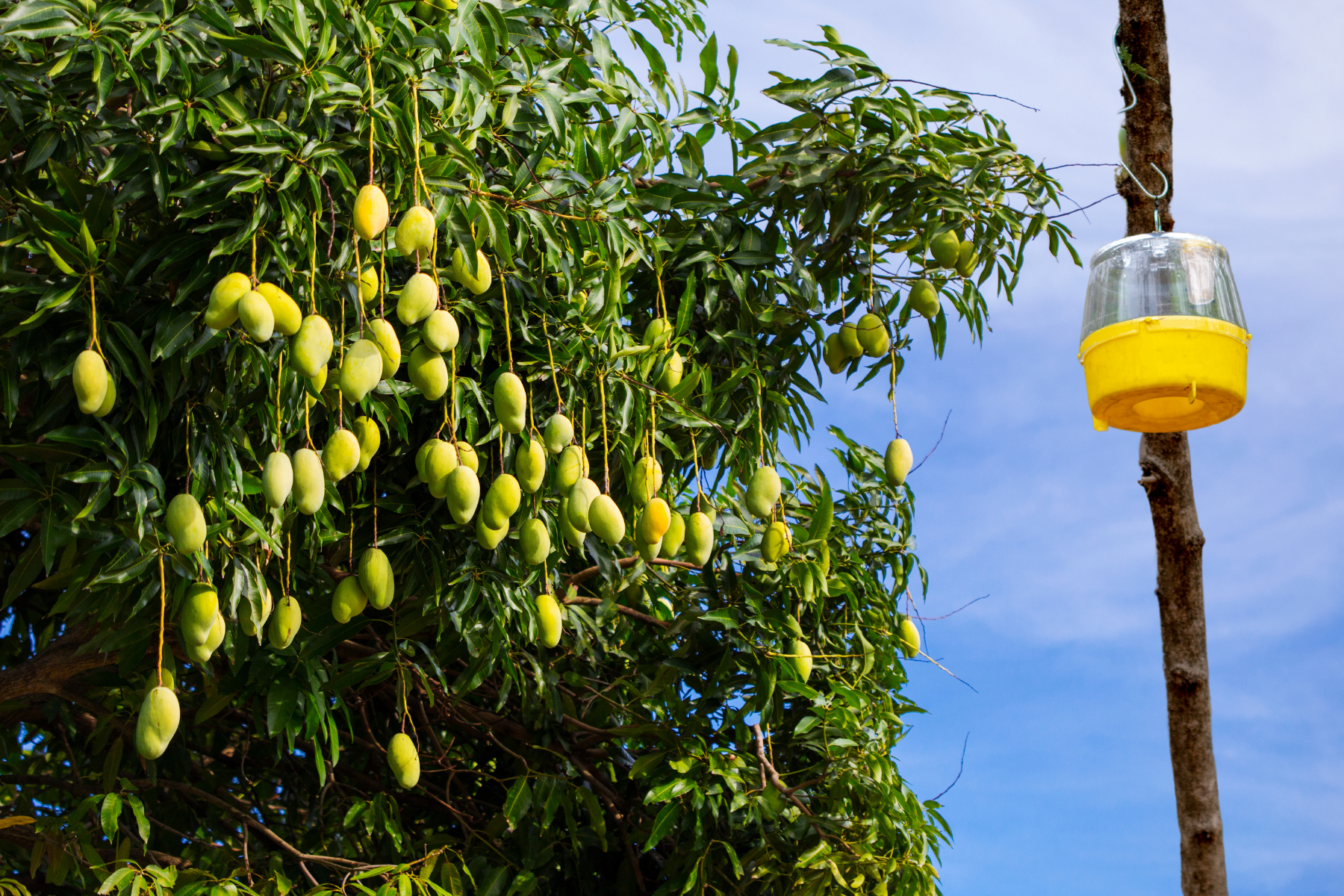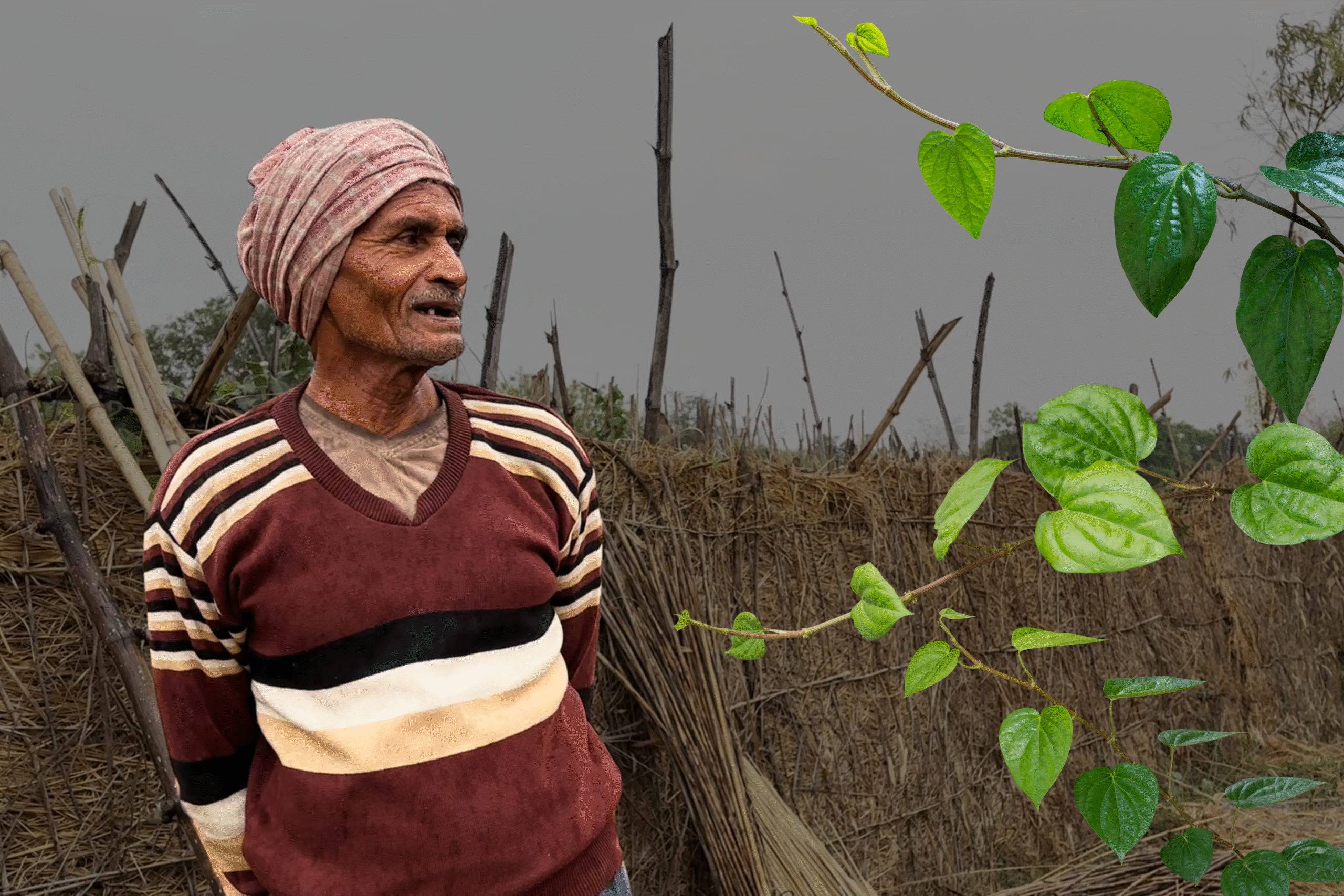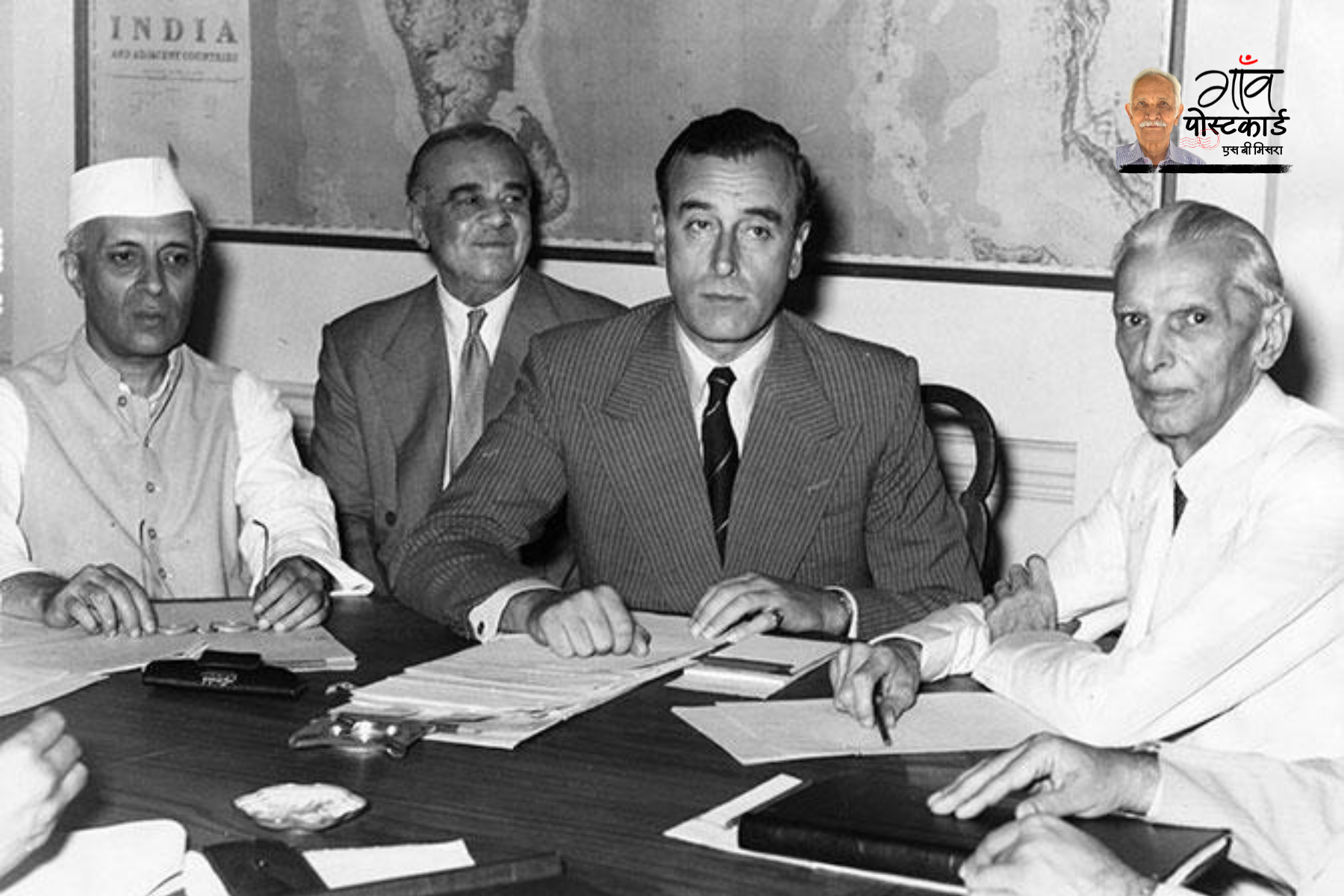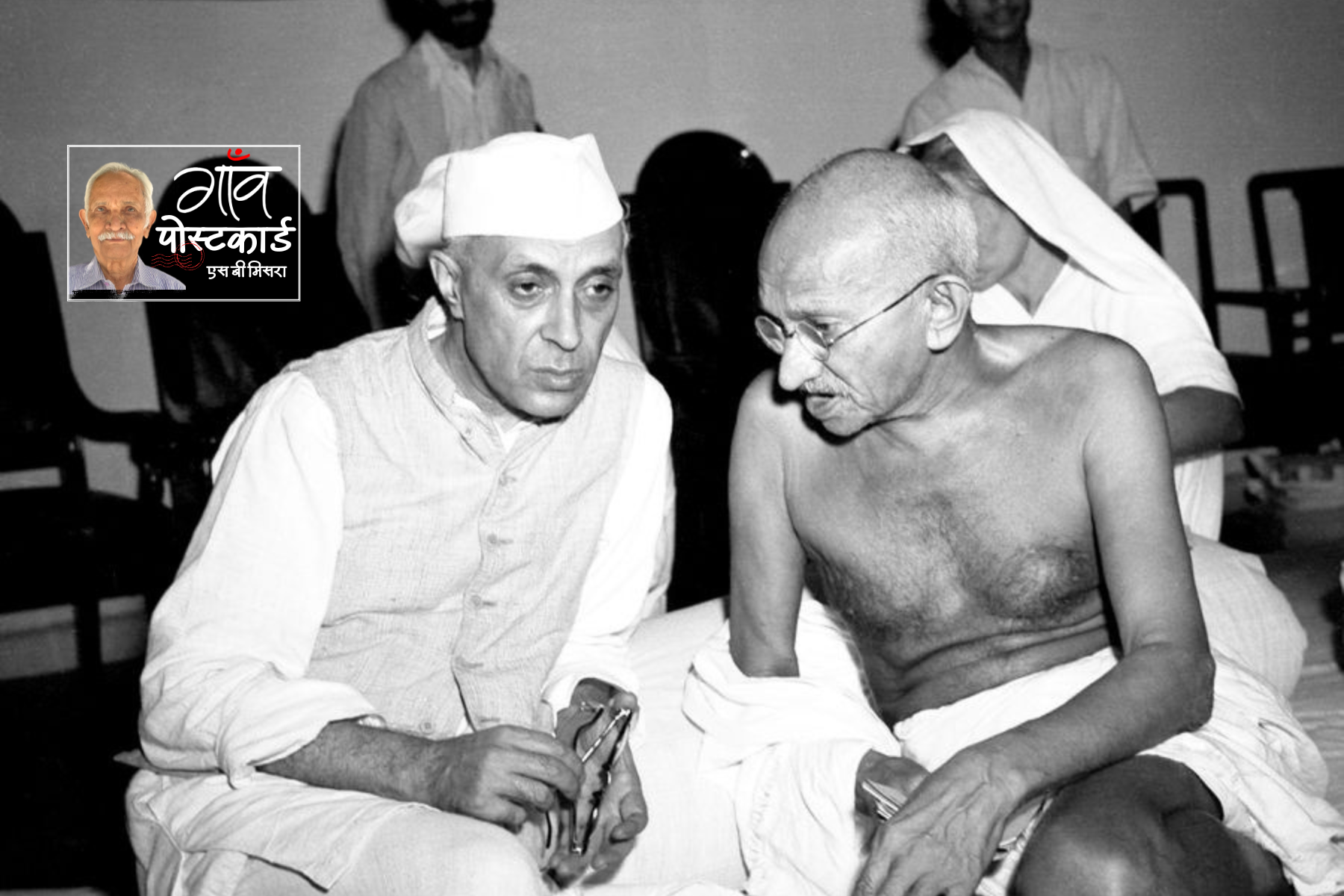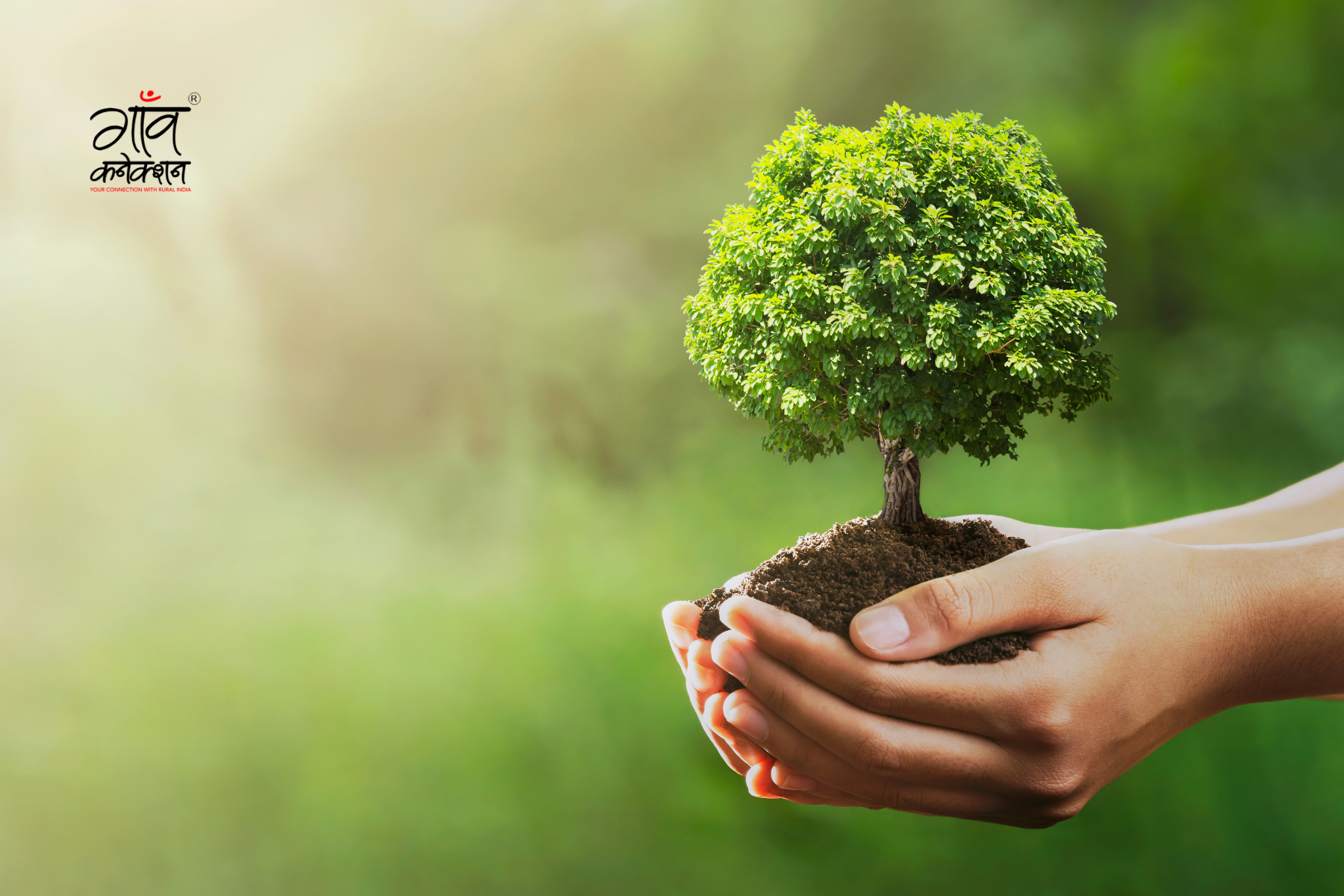Doodhpathri (Budgam), J&K
As the aroma of Kashmiri kahwa wafts about and mobile phones get busy recording reels and stories, there is another story, invisible and hiding behind the counter.
The calloused hands that once broke rocks and dug mud now make and sell tea. Villagers who earlier worked as daily wagers and earned a paltry livelihood, have now set up food stalls to cater to tourists who visit the Doodhpathri waterfalls in Kashmir. They are earning a lot more and everyone is happy.
There are several stalls dotting the road to the Doodhpathri waterfalls in Budgam district, and for passers by, there is nothing more satisfying than warming their cold hands around a cup of kahwa or noon chai (traditional salty Kashmiri tea), and accompanying it with some delicious snack.
Most of the stall owners are couples from the villages near Doodhpathri. The men once worked as daily wage labourers, while their wives looked after their homes. But now, they together run enterprises that bring them more income and immense satisfaction.
One such stall is run by Ayesha and her husband Tarif. “The meagre income from my husband’s work as a labourer was not enough to meet the basic needs of our family. The decision to switch to selling tea and local food has worked wonders for us,” 52-year-old Ayesha told Gaon Connection.
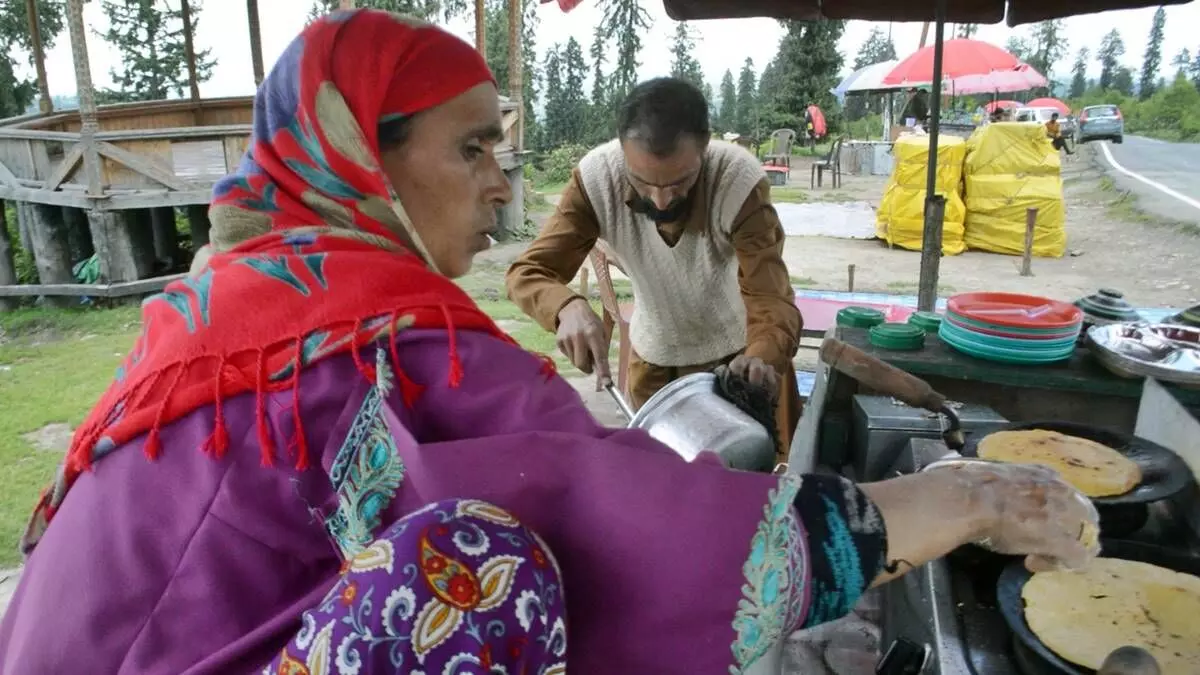
Most of the stall owners are couples from the villages near Doodhpathri.
“We are earning our livelihood this way, and at the same time showcasing our traditional Kashmiri cuisine,” she added.
For the former labourers who earned a couple of hundred rupees a day, starting food stalls has given them a filIlip. They earn several thousands a day depending on the number of tourists. March to October is the peak tourist season. But they manage to run the stalls for the few tourists who come there in the winters too.
Also Read: The Nadru Harvesters of Kashmir
Ayesha and Tariq’s stall has become a popular spot for tourists seeking a taste of traditional Kashmiri cuisine and local hospitality.
“All tiredness just melted away after one sip of the tea,” Raghu Teja, a tourist from Bengaluru, told Gaon Connection, as he stood at the stall, sipping hot fragrant kahwa. He planned to drink the Kashmiri noon chai later, which was kept in its traditional container, the samovar.
Not too far from Ayesha’s stall, Noora deftly turned out fluffy golden brown makkai ki rotis on a hot tava. They are made from corn that is grown locally in Kashmir, she informed Gaon Connection.“I have made countless such rotis over the years,” she laughed as she rolled dough out into perfect circles, tossed them on the griddle and once they were done, flipped them and in a final flourish drizzled a spoonful of ghee on each roti.

There are several stalls dotting the road to the Doodhpathri waterfalls in Budgam district, and for passers by, there is nothing more satisfying than warming their cold hands around a cup of kahwa or noon chai (traditional salty Kashmiri tea), and accompanying it with some delicious snack.
For Noora, it is a matter of pride that she is able to serve local Kashmiri fare to tourists in the area along with her husband, 47-year-old Farooq, with whom she jointly owns the stall.
But the work is hard, and there is considerable struggle too.
Ayesha and Tariq leave home before dawn lugging packets of tea, utensils and other food items to Doodhpathri, which is nearly four kilometres from their village in Riyar, Budgam.
“It is difficult as we have no proper transportation. Also, there is no water facility there so we carry water from home,” said Ayesha. But, even then it was worth their while, she pointed out.
On offer at the various stalls are the fresh hot rotis accompanied by greens, freshly pickled vegetables and of course the special Kashmiri tea along with the traditional haq and kadam. The homemade taste is proving to be irresistible to tourists.
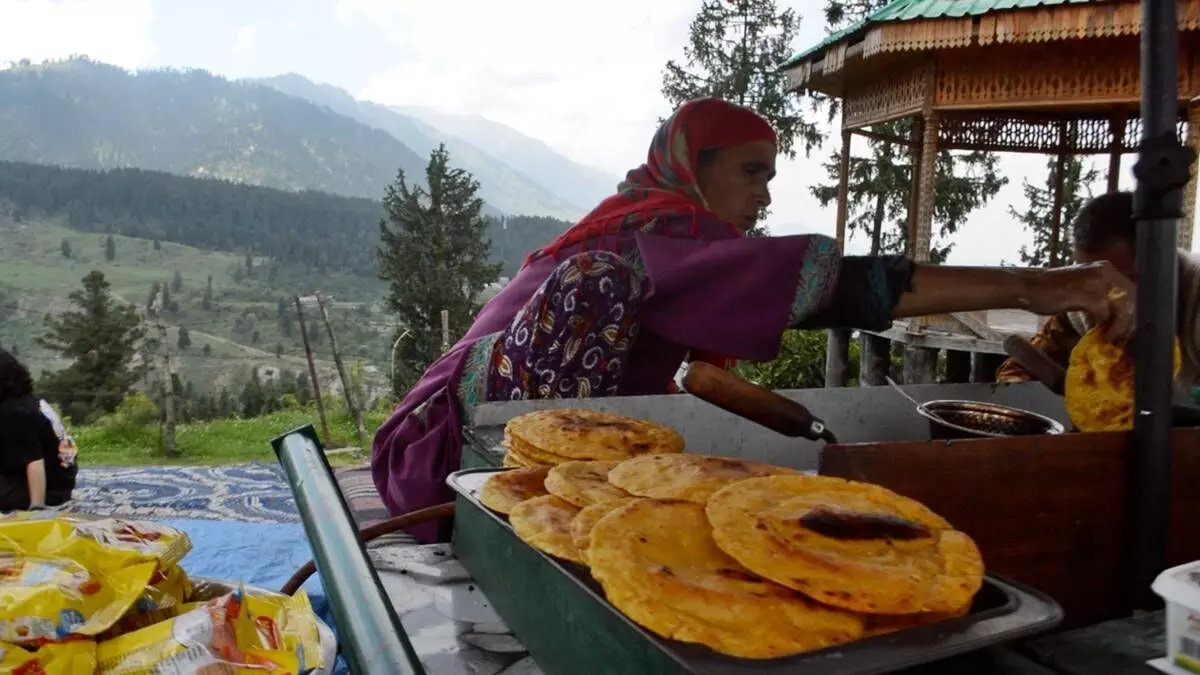
The homemade taste is proving to be irresistible to tourists.
Also Read: It’s chillai kalan in J&K and here are some traditional Dogra recipes to keep you warm
Naseema was surprised when the few rotis and vegetables she made and sent with her husband, 55-year-old Ghulam Mohammad, to sell at a stall he set up five years ago, would become so popular with the tourists.
So, Naseema decided to accompany him; she made piles of fresh rotis at the stall, and also began to offer interesting accompaniments with them, to which she added her own twist. Kashur Achar, Chhati Haakh, Souchal, Kadam… etc are some of the tempting dishes on offer.
“I always wanted to do something of my own, and now I am happy that I am doing it with my husband,” said 52-year-old Naseema. “Working together, we have been able to provide for our family, and it is a fulfilling experience.”
“She has made our stall stand out through her innovative ideas. People love the freshness and homemade flavour of our food,” Ghulam Mohammad said with pride.
For Raghu, stopping there and enjoying the hospitality of the local people was a way to really soak in the culture and taste of Kashmir. “They not only feed hungry tourists, they are also keeping their cuisine traditions alive,” he said.
Another weary tourist, Varun, gratefully gulped down the aromatic noon chai. “These stall owners represent the very heart of Kashmiri hospitality, and offer a welcome respite for road travellers in an otherwise challenging terrain,” he told Gaon Connection.
As the sun set and the number of tourists started dwindling and it was unlikely anymore will pass by, Ayesha, Farooq, Naseema, Ghulam Mohammad and others like them, packed up their stalls and wend their way back home, tired, but also happy that they could feed so many hungry people that day, with indigenous cuisine.



